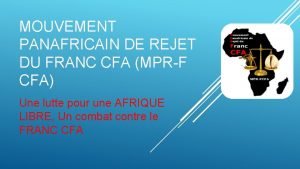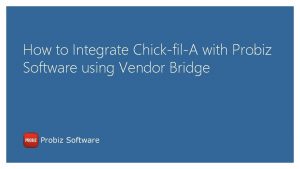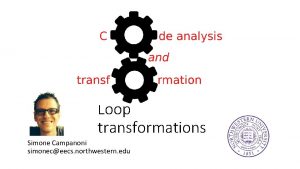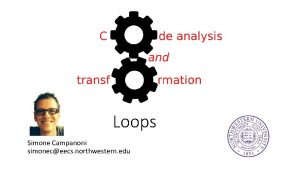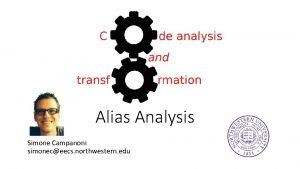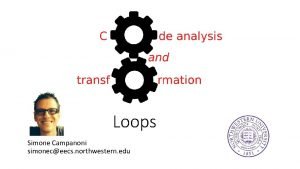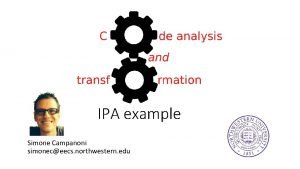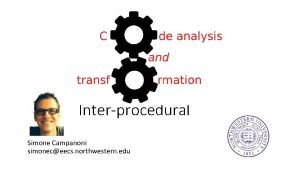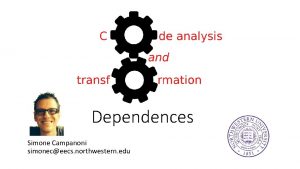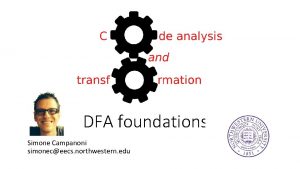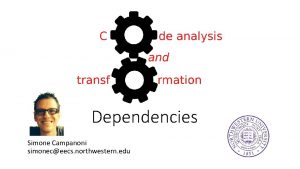CFA Simone Campanoni simoneceecs northwestern edu Outline Why












- Slides: 12

CFA Simone Campanoni simonec@eecs. northwestern. edu

Outline • Why do we need control-flow analysis? • Basic blocks • Control flow graph

Optimization example: constant propagation int sumcalc (int a, int b, int N){ int x, y; x = 0; y = 0; for (int i=0; i <= N; i++){ x = x + (a * b); x = x + b*y; } return x; }

Constant propagation • Find a constant expression Instruction i: var. X = CONSTANT_EXPRESSION • Replace the use of the variable defined in a constant expression with that constant if • All paths to the use of var. X passes its assignment I • There are no intervening definition of that variable We need to know the “control-flow” of the program

Representing the control flow of the program • Most instructions • Jump instructions • Branch instructions

Representing the control flow of the program A graph where nodes are instructions • Very large • Lot of straight-line connections • Can we simplify it? Basic block

Basic blocks A basic block is a maximal sequence of instructions such that • Only the first one can be reached from outside this basic block • All instructions within are executed consecutively if the first one get executed • Only the last instruction can be a branch/jump • Only the first instruction can be a label

Basic blocks in LLVM • Every basic block in LLVM must • Have a label associated to it • Have a “terminator” at the end of it • The first basic block of LLVM (entry point) cannot have predecessors • LLVM organizes “compiler concepts” in containers • A basic block is a container of ordered LLVM instructions • A function is a container of basic blocks • A module is a container of functions

Basic blocks in LLVM in action Bitcode generation on i t a er n e g e d o Bitcode Bitc generation t a r e en g e d o Bitcode generation

Control Flow Graph (CFG) • A CFG is a graph G = <Nodes, Edges> • Nodes: Basic blocks • Edges: (x, y) ϵ Edges iff last instruction in basic block x might be executed just before the first instruction of the basic block y Examples?

Control Flow Graph (CFG) • Entry node: block with the first instruction of the function • Exit nodes: blocks with the return instruction • Some compilers make a single exit node by adding a special node ret

CFG in LLVM Differences? Bitcode generation opt -view-cfg






